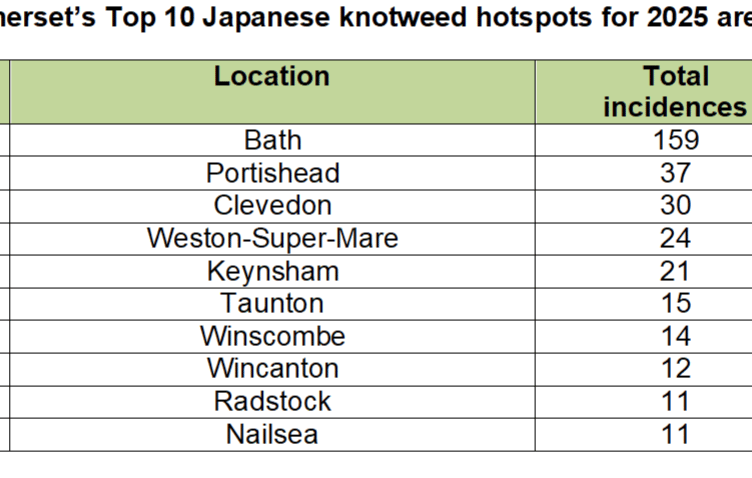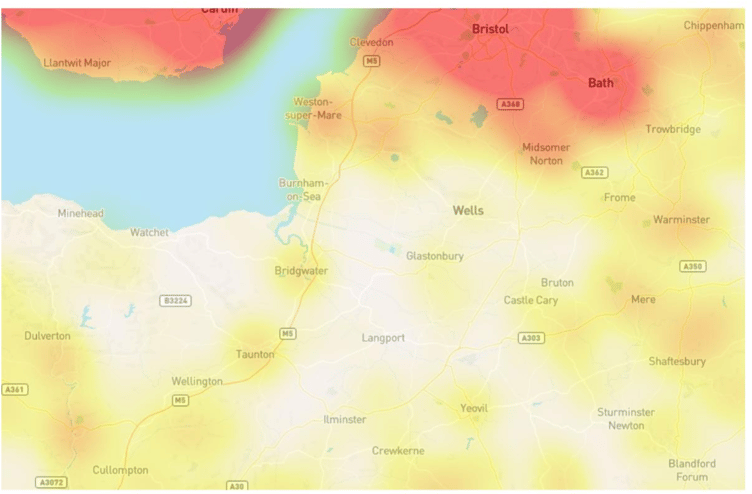HOMEOWNERS in Radstock are being urged to remain vigilant for signs of Japanese knotweed as the invasive plant reaches peak growing season.
According to the latest data from invasive plant specialist Environet, Radstock has been identified as one of Somerset’s top 10 hotspots (ninth) for Japanese knotweed in 2025, with 11 verified occurrences logged on the UK-wide tracking tool, Exposed: The Japanese Knotweed Heatmap.
Now populated with over 100,000 known incidences of the UK’s most invasive plant, the map is updated with new verified sightings throughout the year, providing the most comprehensive online record of Japanese knotweed in the country.
Members of the public can enter their postcode to discover the number of sightings nearby, with hotspots highlighted in yellow, orange or in the worst cases red, helping them understand the level of risk posed to their home or one they wish to buy.
They can also help populate the heatmap by reporting knotweed infestations using the ‘Add Sighting’ feature and attaching a photograph of the plant so it can be verified by experts.
Knotweed begins to emerge in early spring, quickly growing into lush green shrubs with pink-flecked stems, heart-shaped leaves and bamboo-like canes. It can pose serious problems for homeowners, with underground rhizomes that can grow up to three metres deep and spread up to seven metres horizontally, emerging through cracks in concrete, tarmac driveways, pathways, drains and cavity walls.
While serious damage to property is rare, since mortgage lenders require knotweed to be dealt with when a property is sold, it can cause legal disputes between neighbours and reduce a property’s value by approximately five per cent. A 2023 DEFRA report put the cost of tackling knotweed to the UK economy at nearly £250-million a year.

Environet director Emily Grant said: “By mapping verified sightings, we’re helping people understand the level of risk in their local area and encouraging early identification and treatment.”
“Vigilance is the best way to protect your property from Japanese knotweed, making sure you tackle it as early as possible before it becomes well established. At this time of year, knotweed is in full growth mode and easy to spot with its bright green heart-shaped leaves which grow in a zigzag pattern up the stems. Mature plants flower around August, when they produce clusters of tiny white blooms.”
“If you do suspect you have knotweed on or near your property, you can email a photo to us at [email protected] and we’ll identify it for free. If it is knotweed, a survey will determine the extent of the infestation and the best way to treat it, whether that’s digging it out of the ground, herbicide treating it or a combination of both.”
“Public engagement is key in the fight against knotweed, and by reporting new sightings homeowners can play an important role in controlling this invasive plant and protecting property values.”
For further details about Japanese knotweed, how to identify it, treatment options, and to view the national heatmap of reported sightings, visit the Environet website at www.environetuk.com





Comments
This article has no comments yet. Be the first to leave a comment.